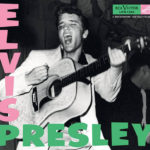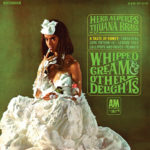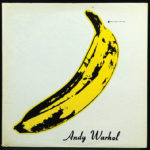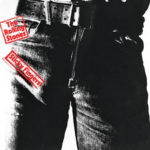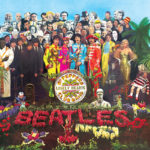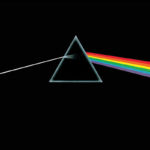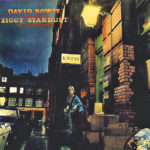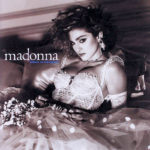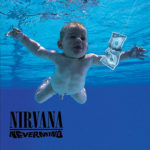While much can be said about the seismic shift of music being predominantly available via streaming services nowadays, the lack of packaging for releases has most affected a sub-culture of art—the album cover. Back when vinyl was king, the idea of the album cover went from being an obvious marketing tool to being an outlet for artists that included photographers, early graphic designers and illustrators.
One of the earliest and most iconic album covers was from Elvis Presley’s self-titled 1956 debut that had the King’s name in neon green and pink framing an image of him shot by William V. “Red” Robertson during a Presley gig at the Fort Homer Hesterl Armory in Tampa, FL, on July 31, 1955. The Clash (1979’s London Calling), Big Audio Dynamite (1995’s F-Punk) and k.d. Lang (2006’s Reintarnation) would later pay homage to it via releases of their own.
A&M Records future art director Peter Whorf came up with the concept for Herb Alpert & the Tijuana Brass’ epic 1965 release Whipped Cream & Other Delights. For the shoot that took place in Whorf’s converted garage/studio, he had pregnant model Dolores Erickson pose in her bikini with the straps pushed down and immersed in shaving cream (whipped cream ran and smelled under the hot lights and was only used on top of the subject’s head and tip of the index finger she touched her lips with).
Andy Warhol jumped into the world of album cover art in the 1950s, when he was hired by labels such as RCA and Prestige to provide imagery for albums by Vladimir Horowitz, Arturo Toscanini, Count Basie and Thelonious Monk. Fast forward to the late 1960s and early 1970s, and the art legend was coming up with his most iconic work. These included the 1967 debut album The Velvet Underground & Nico (which featured a peel-away version of a Warhol print of a banana on the cover) and The Rolling Stones epic 1971 outing Sticky Fingers (complete with a working zipper for the close-up image of a jeans-clad male crotch). Warhol’s later designs included the 1977 Stones concert outing Love You Live, Billy Squier’s 1982 studio effort Emotions in Motion and the posthumous 1986 John Lennon collection Menlove Avenue.
Among pop artists who got into the album cover game early were Peter Blake and Jann Haworth, who created the image for the 1967 Beatles opus Sgt. Pepper’s Lonely Hearts Club Band. The photo shoot suggested the band had just played a concert in the park as their alter-egos and featured a group of whatever concert-goers the Fab Four wished. Life-sized cutouts of famous people that were used included Marlon Brando, Tony Curtis, Stan Laurel, Oliver Hardy, Oscar Wilde, Marilyn Monroe, Bob Dylan, Sonny Liston and wax figures of Beatlemania era band members borrowed from Madame Tussauds.
English art design group Hipgnosis (Storm Thorgerson, Aubrey Powell and later Peter Christopherson) had a number of significant commissions by numerous groups including T. Rex, Black Sabbath, Led Zeppelin, Yes, The Police and AC/DC. They arguably enjoyed their greatest success via their work with Pink Floyd. Aside from Atom Heart Mother, Meddle, Obscured By Clouds, Animals and Wish You Were Here, the Thorgerson/Powell duo’s most impactful design was for 1973’s Dark Side of the Moon, which was a minimalist presentation featuring a prism with a color beam projected through it inspired by a picture Thorgerson found in a photography book.
The late David Bowie’s love of art found him heavily involved with album designs that led to his using shots by photog friend Mick Rock for 1972’s The Rise and Fall of Ziggy Stardust and the Spiders From Mars and 1973’s Pin Ups. Photography presented the most direct way of creating album cover art. The simplicity of this discipline yielded 1975’s Born to Run, which centered on an Eric Meolao shot of Bruce Springsteen leaning on saxophonist Clarence Clemons in a pose replicated by Cheap Trick on 1983’s Next Position Please. In the 1980s, Madonna would work with Steven Meisel (1984’s Like a Virgin) and Herb Ritts (1986’s True Blue).
The 1991 Nirvana album Nevermind, which showed a naked baby boy floating alone underwater with a U.S. dollar bill on a fishhook just out of his reach, was as shocking as the music contained within. The inspiration was a program on waterbirths that band members Kurt Cobain and Dave Grohl were watching it proved to be one of the last gasps of album cover innovation before it was rendered moot by streaming music.

